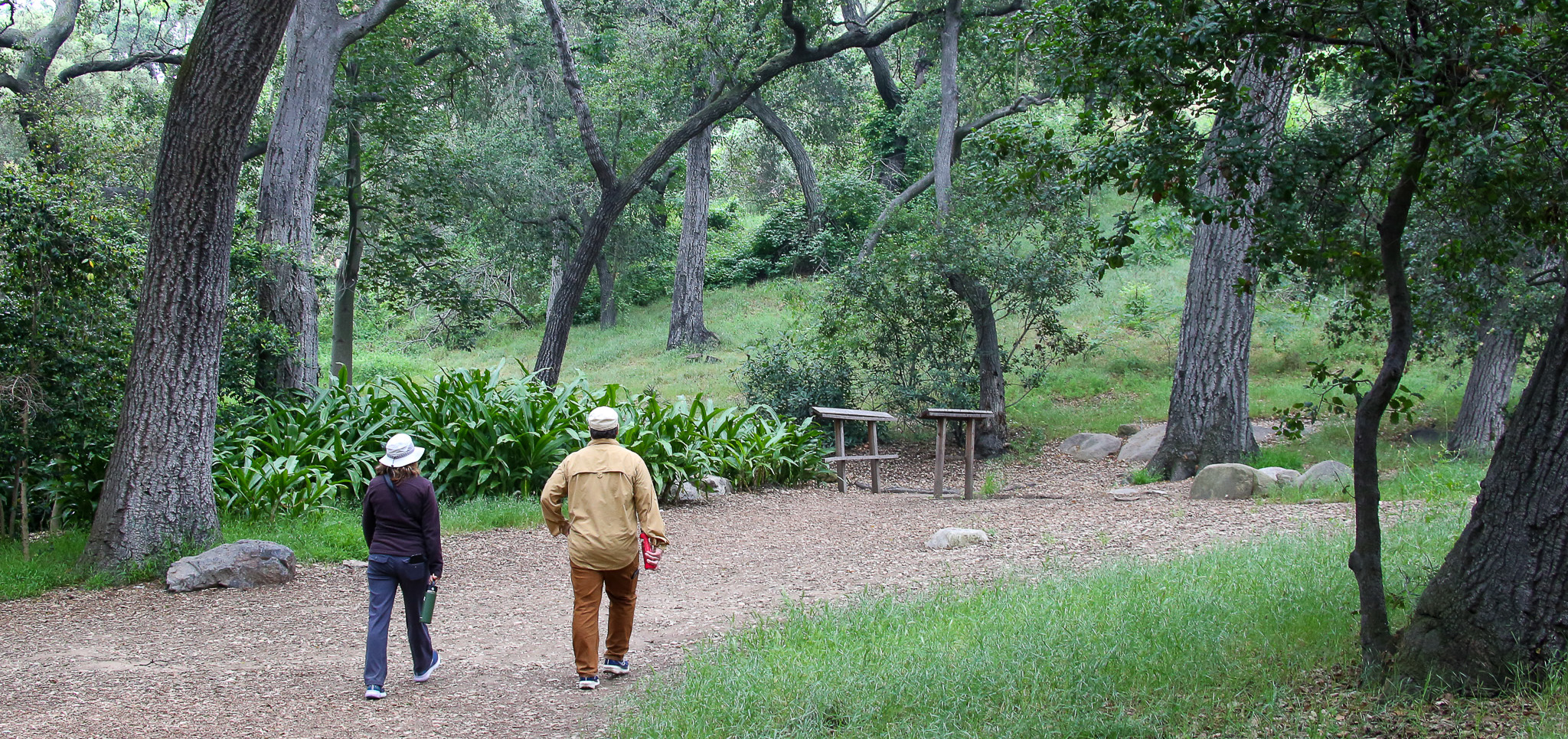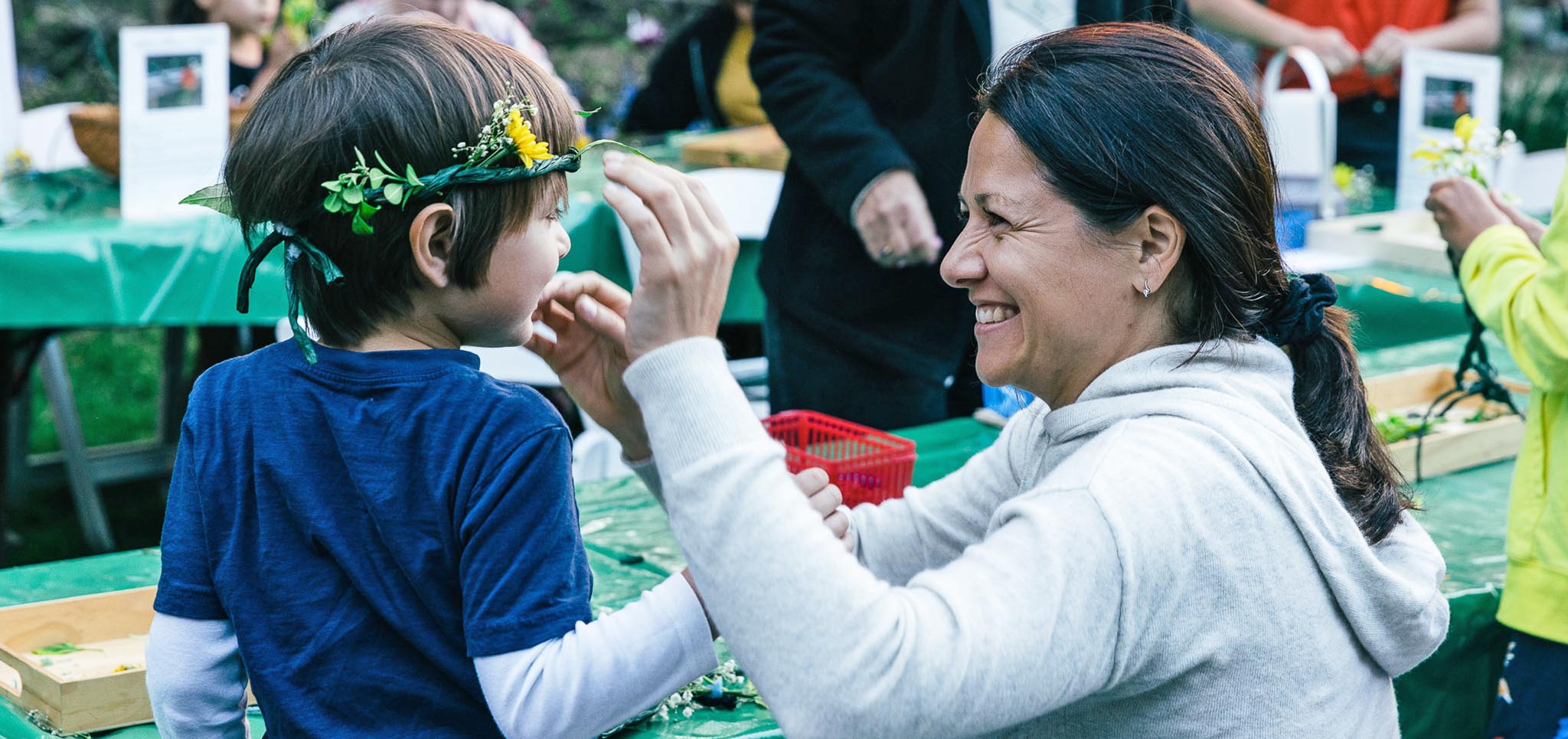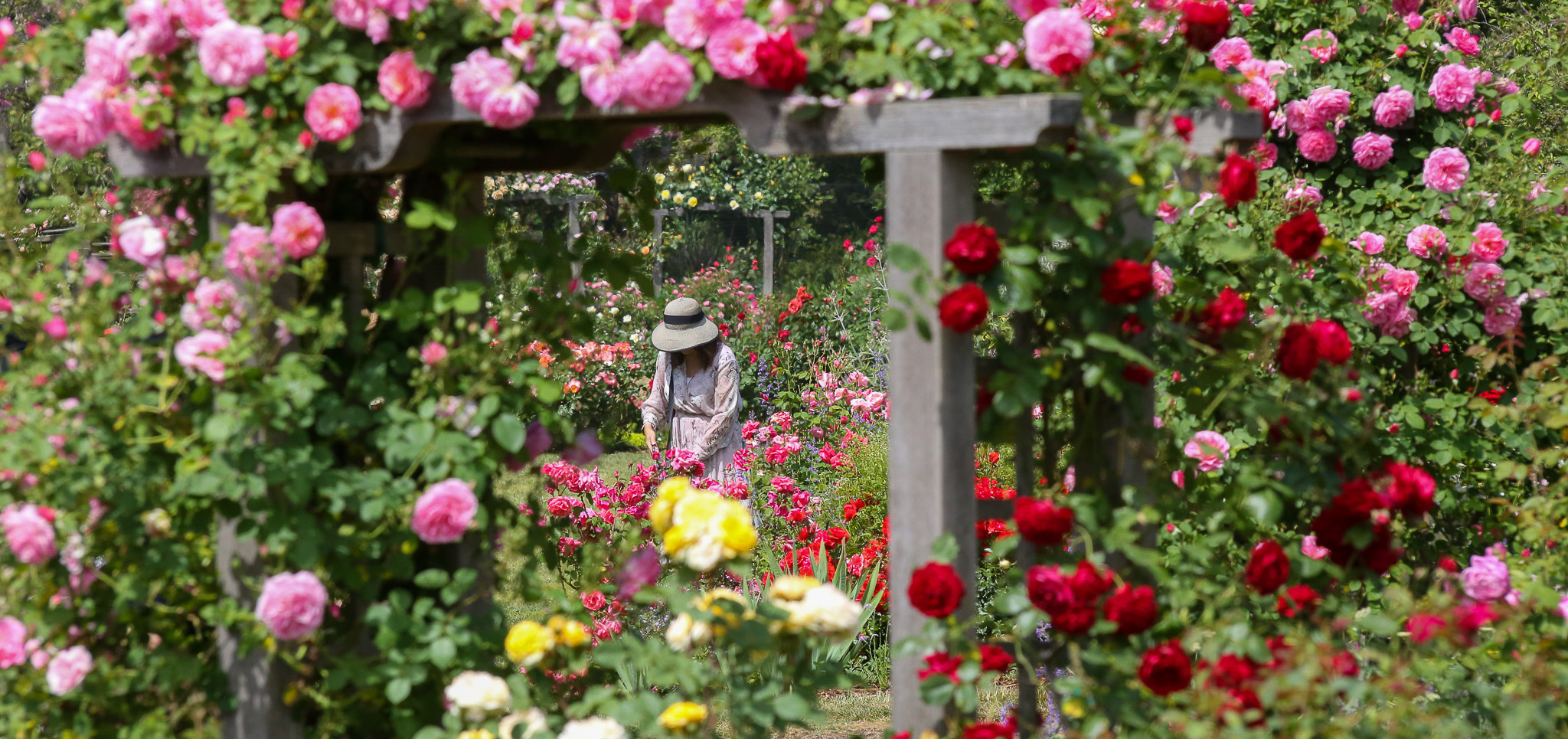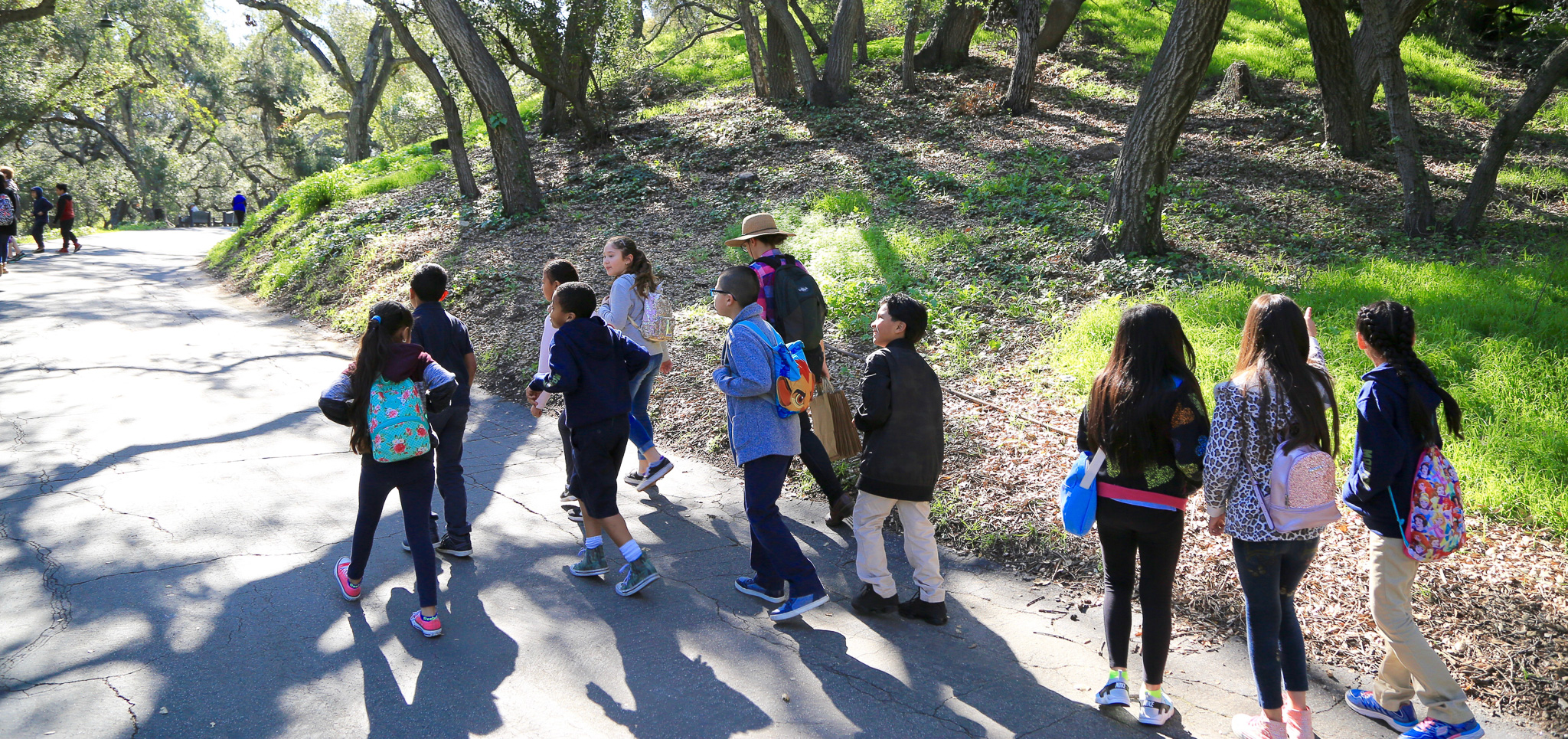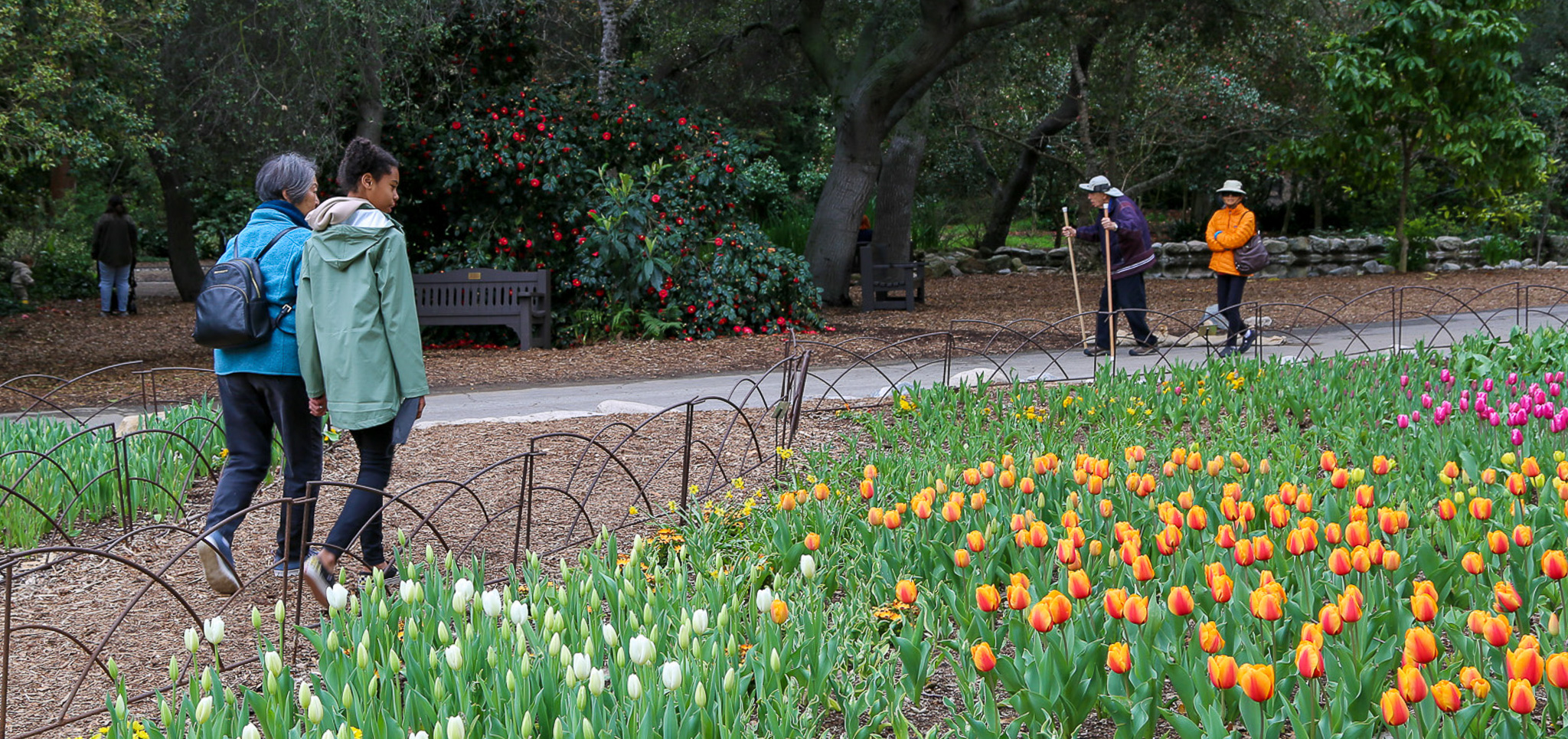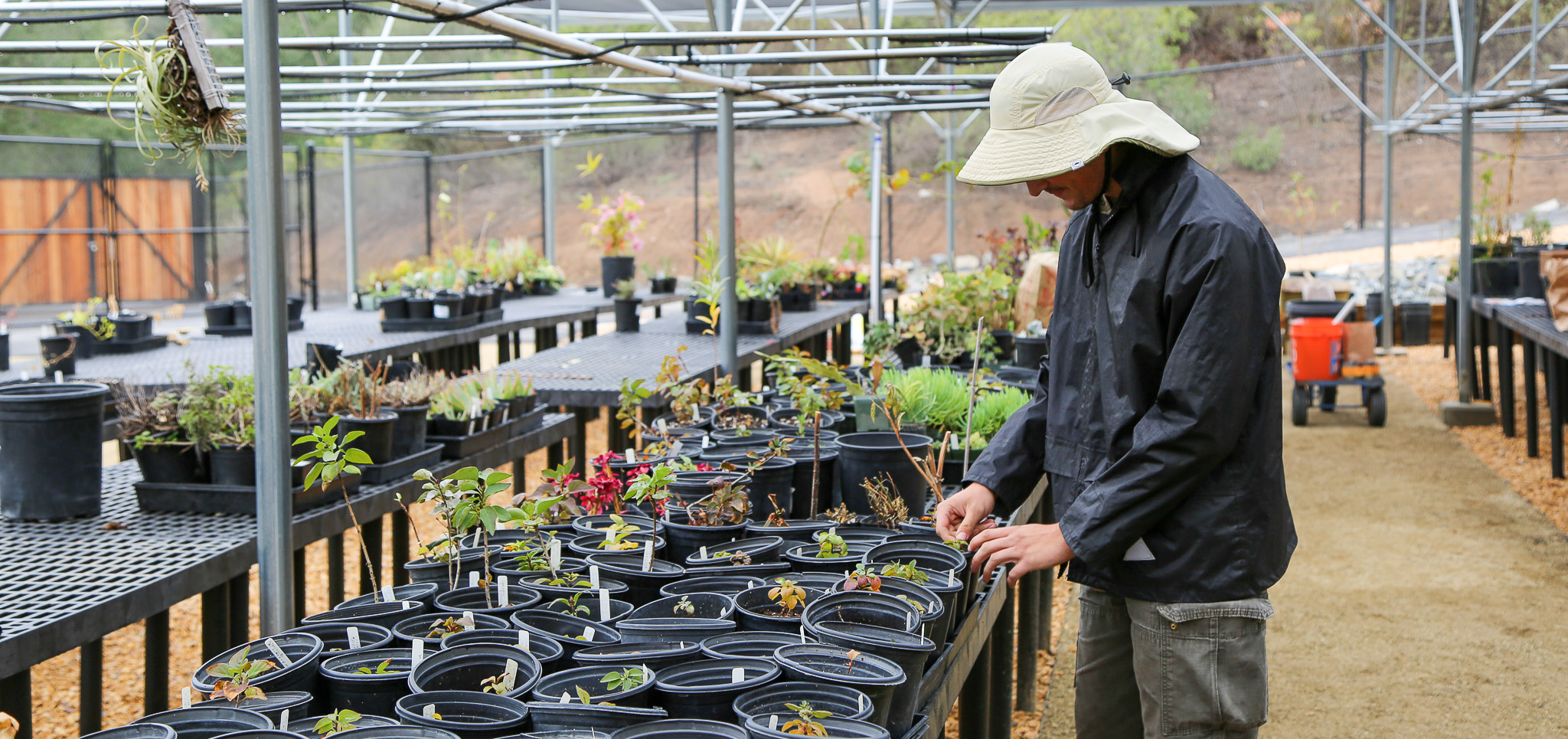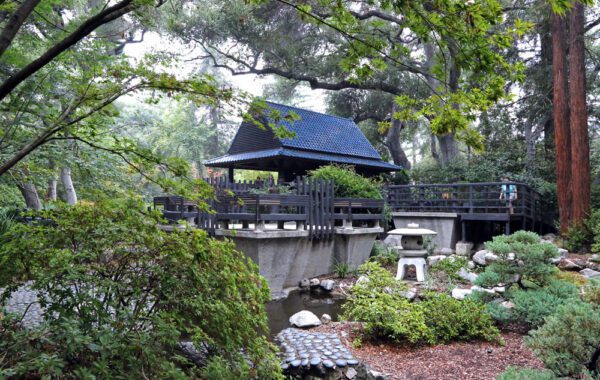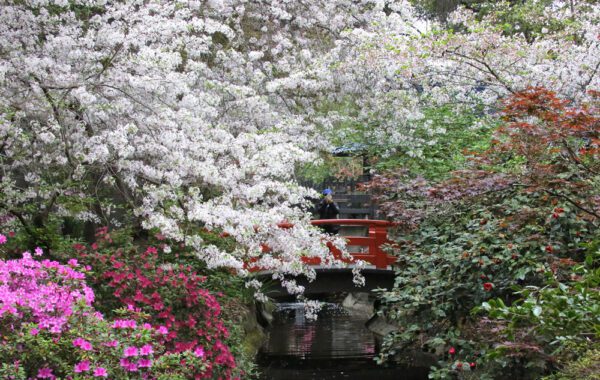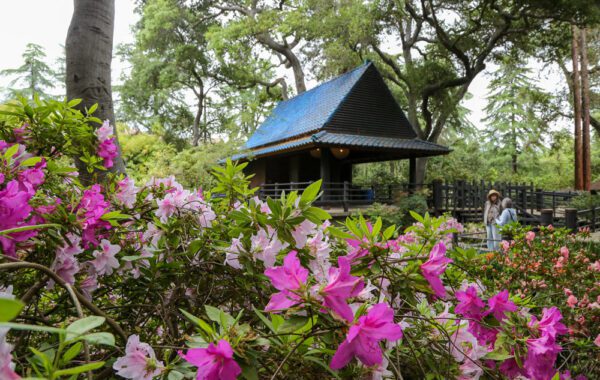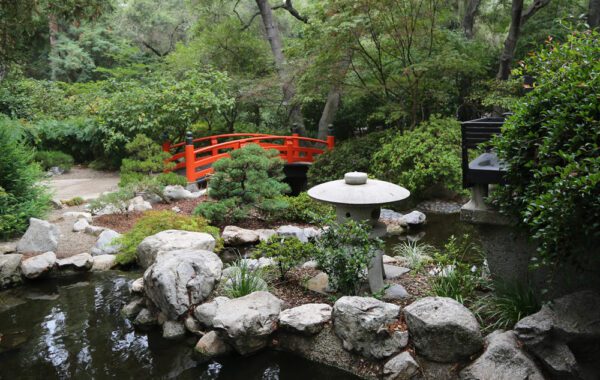Asian oasis under coast live oaks
The Japanese Garden teahouse
Cherry blossoms in the Japanese Garden
Azaleas frame the teahouse in spring
The iconic bridge in the Japanese Garden
A tranquil melange of garden styles
Tucked beneath the shade of coast live oaks, Descanso’s Japanese Garden incorporates features found in many different styles of gardens in Japan, including a stroll garden, a stream-and-pond garden, a tea garden and a raked-gravel garden. The raked-gravel garden is known as karesansui, a type of Japanese rock garden first designed to inspire contemplation.
Native Asian plants
The plants in our Japanese Garden are all native to Asia and include camellias, azaleas, black pines, mondo grass, flowering cherry trees, and Japanese maples. The garden was designed by noted Los Angeles landscape architect Eijiro Nunokawa.
Architectural highlights
The Japanese Garden includes several distinctive architectural elements. Designed by San Marino architect Whitney R. Smith, the teahouse, with its roof crafted from blue tiles imported from Japan, is especially striking in the spring when the nearby pink cherries are in bloom. The garden includes a minka designed by Kenneth Masao Nishimoto. Built in 1969, the minka is modeled after the traditional Japanese farmhouse.
Dedicated volunteers made it possible
Opened in 1966, the Japanese Garden was built with all-volunteer labor and funding provided by the Japanese American community. It was the culmination of years of effort by a dedicated group, including Mrs. Forrest Kresser “Judge” Smith, founding president of the Descanso Gardens Guild, and Guild board member Frank Kuwahara.
